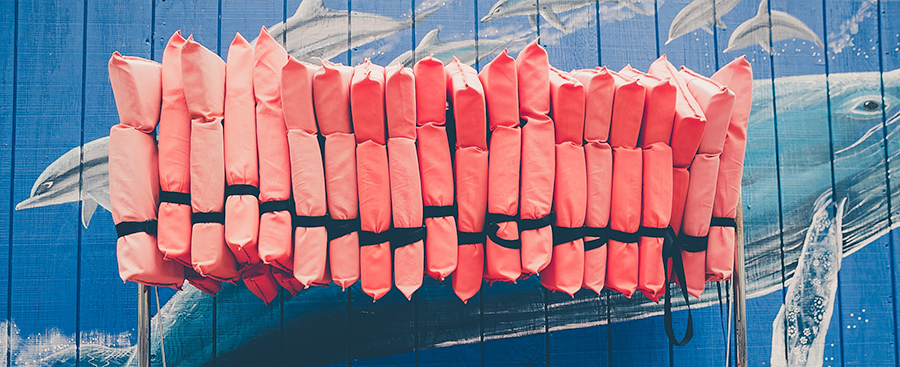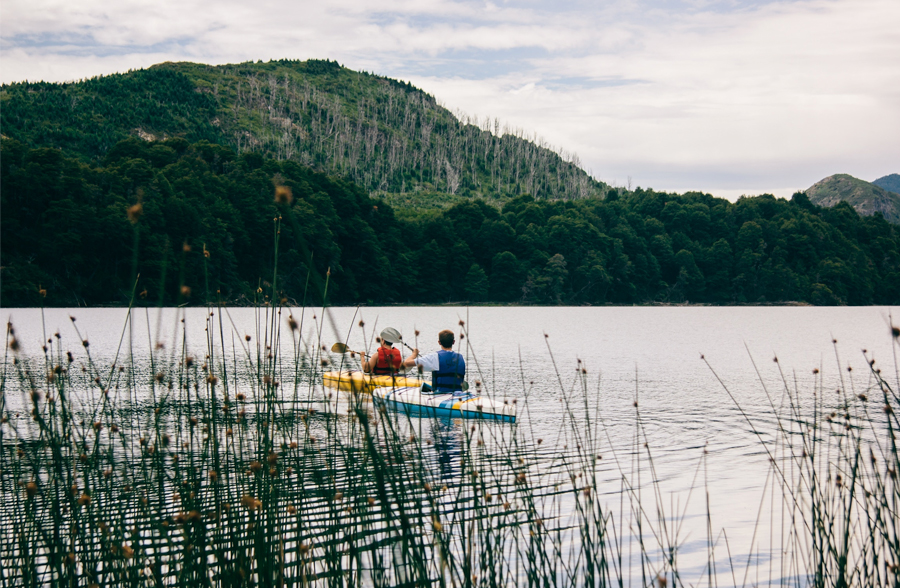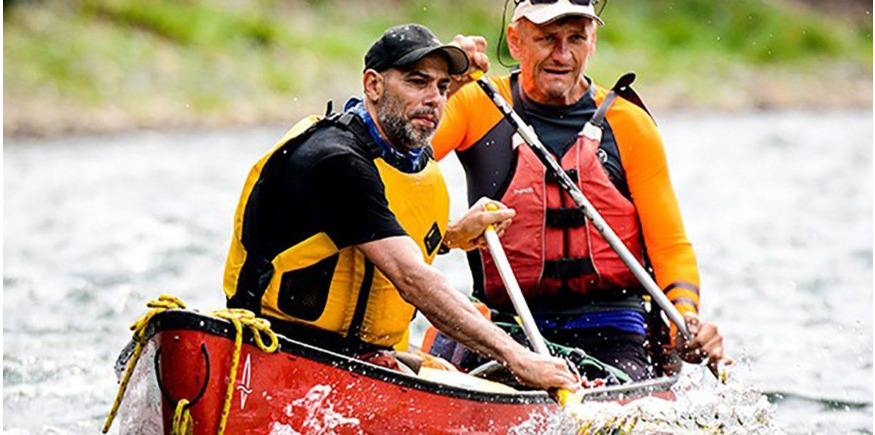Whether you enjoy heading out on your kayak or speeding through the waves on water-skis, buoyancy aids are an essential wardrobe accessory for any water sports enthusiast. Increasing your ability to float and providing impact protection, buoyancy aids will help you feel more secure on the water – particularly when the water is slightly unpredictable, or in case you suddenly lose your balance.
The terms buoyancy aid and life jacket are often used interchangeably. This is likely because both are used for several water sporting disciplines and each type contains floatation devices. However, it’s vital you are aware of the key differences so that you can choose the right one to best suit your needs.
Differences between buoyancy aids and life jackets
Purpose and function
Buoyancy aids are designed to assist with surface-water swimming, whereas a life jacket is suitable for offshore use. Life jackets are intended to keep the wearer afloat, without the need to swim.
Good quality life jackets should be fully supportive. As the name suggests, they can potentially save lives – especially if someone is injured or unconscious while in the water.
Many people are confused as to whether a buoyancy aid will keep them afloat. In short, a buoyancy aid cannot be relied upon for complete flotation; they simply help you to stay buoyant, so long as you can tread water to a degree.
Buoyancy aids must not be used as substitutes for life jackets, especially when children are involved.
Buoyancy ratings
Generally, buoyancy aids possess a lower newton rating, usually around 50N. A newton is the unit of measurement used to determine the amount of force required to move an object.
A 50N buoyancy aid is a great option for able swimmers who enjoy water-based activities nearer to the shoreline, such as water skiing, snorkelling or kayaking. They’ll provide an element of safety for swimming, helping you to float more easily if assistance is required near the waterside.
Life jackets have a higher newton rating (between 100N–150N). This allows the wearer to stay afloat in all kinds of situations. They are better suited to less confident swimmers and are a safer choice for offshore activities further away from the shoreline – like yachting.

Life jackets provide head support
Unlike buoyancy aids, a quality life jacket should feature an additional collar to maximise head support and ensure that you upright in the water. This will prevent the wearer from lying face down and stop water from getting into airways.
Types of buoyancy aid
There are various types of buoyancy aids on the market. Over-the-head or front zipper buoyancy aids are easy to wear, whilst strapped aids are adjustable for a highly secure fit. There are also colourful, high-visibility designs which are perfect for standing out in the water.
Buoyancy ratings explained
50N
This level is for buoyancy aids only. It’s the ideal weight for swimmers who remain near the shoreline and participate in water sports closer inland. Although they do aid floatation, a 50N buoyancy aid will not keep an individual fully afloat – to do so will require a degree of exertion.
100N
A 100N life jacket is perfect for general swimming or water sport use on calmer waters and will significantly increase the buoyancy. However, it may not be able to completely support a non-swimmer or naturally allow an unconscious person to lie on their back.
150N
150N is the typical rating for most life jackets. This level of flotation is suited to high-performance activities away from the shore. A 150N life jacket should be capable of keeping an unconscious individual’s face away from the water and automatically turn a person to a safer position, on their back. Bear in mind that the performance of such a jacket can be impacted by heavier clothing.

Do I need a buoyancy aid?
Buoyancy aids are recommended for participants in most water sports. Provided they are well-fitted, cared for and used appropriately, a buoyancy aid or life jacket could prevent you or your child from getting into difficulties if you capsize out on the water.
Deciding on whether to invest in one yourself will depend on a range of factors, including:
- The weather
- The destination
- The activity
- Your level of experience in a your chosen watersport
- Your level of swimming experience
- How far out from the shore you intend to travel
- What makes you feel most comfortable and safe
It’s not worth taking risks, so using a buoyancy aid or life jacket shouldn’t be readily dismissed. Consider your ability and the risks involved, then decide accordingly.
Where to buy buoyancy aids
At Two Bare Feet we specialise in outdoor clothing and accessories. We have all you could possibly need to enjoy your waterborne adventures comfortably and in safety. Our range of buoyancy aids and life jackets are available for men, women and children. All our designs are hard-wearing, lightweight and certified as fully compliant with European safety standards. We also offer a range of float vests designed specifically as swim training aids for younger children.
Choosing the right buoyancy aid will mostly be determined by your weight, so be sure to also check on-page sizing guidance.




